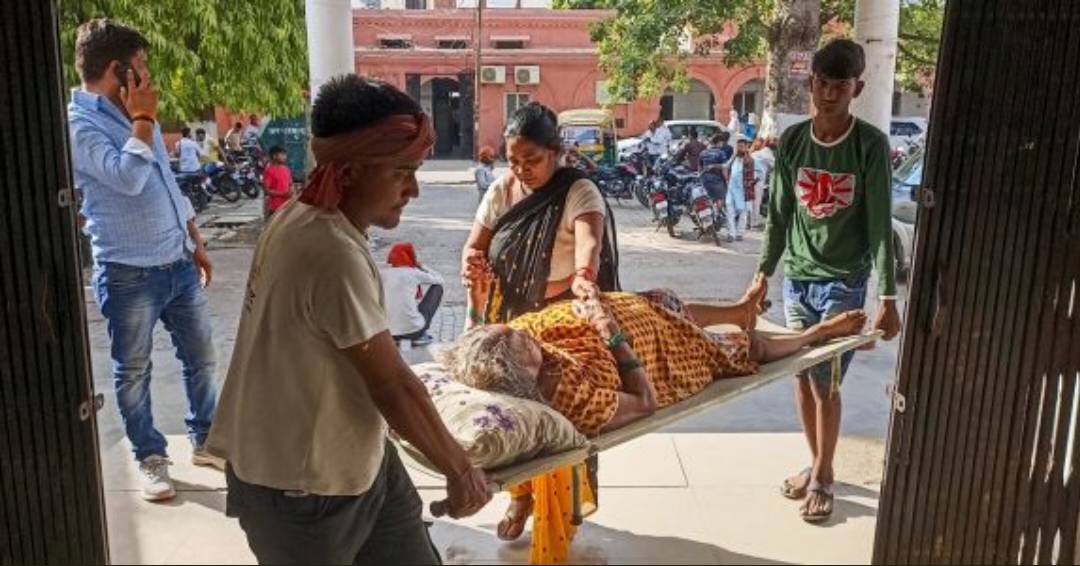
In a tragic turn of events, the Ballia district hospital in Uttar Pradesh witnessed the deaths of fifty-seven patients within a span of just four days. The alarming number of deaths prompted the intervention of a health committee from Lucknow, which arrived at the hospital to investigate the cause behind these fatalities. Surprisingly, the scorching heatwave conditions prevailing in the region were initially suspected to be the main factor behind the deaths. However, the Chief Medical Officer of Ballia, Dr Jayant Kumar, revealed that only two individuals had actually succumbed to heat stroke.
A two-member committee consisting of Director (Communicable Diseases) Dr A K Singh and Director (Medical Care) K N Tiwari examined the hospital wards and ruled out severe heat as the primary reason for the rise in deaths among elderly patients. The committee’s findings cast doubt on the initial assumption, prompting further scrutiny into the matter.
Following an insensitive remark made by Chief Medical Superintendent (CMS) Dr Divakar Singh about the cause of deaths, he was removed from his position and transferred to Azamgarh. In his statement, Dr Singh had attributed over 20 deaths to the heat. Dr S K Yadav was appointed as the new CMS in his place.
Providing insight into the situation, Dr Jayant Kumar stated that the hospital was under immense pressure due to a daily influx of 125 to 135 patients. He disclosed that on June 15 alone, 154 patients were admitted, and 23 of them passed away due to various reasons. The death toll continued to rise, with 20 deaths recorded on June 16 and 11 on the following day. All the deceased patients were aged above 60 years.
Dr Kumar clarified that, according to hospital records, only two deaths were attributed to heat stroke, while the remaining fatalities were connected to pre-existing conditions. He further revealed that three more patients had lost their lives at the hospital on the day of his statement.
During the inspection, Dr A K Singh shared his observations with the media, highlighting that the majority of deaths occurred within a few hours of admission, leaving little time for medical staff to stabilize the patients or conduct necessary tests. He emphasized that it was too early to ascertain the exact cause of these deaths and mentioned that most of the deceased patients were from the Bansdih and Gadwar blocks of the district.
In an effort to investigate all possible angles, the committee requested authorities to test the drinking water in the area, considering that many patients had complained of chest pain, irregular breathing, and fever. Dr Singh stated that a comprehensive analysis of symptoms and medical examinations of body fluids would be conducted to determine the underlying causes.
When questioned about the role of the heatwave in the deaths, Dr Singh argued that if heat were the sole cause, similar deaths would have been reported in other districts with comparable or higher temperatures. He did acknowledge, however, that the hospital’s cooling arrangements were inadequate.
Meanwhile, Transport Minister Daya Shankar Singh, who represents the Ballia Nagar constituency, attributed the high death rate among the elderly during summer as a natural occurrence. He expressed confidence in the arrangements made by the health department and praised the monitoring efforts of the two officers who were overseeing the situation.
Between June 15 and June 17, nearly 400 patients were admitted to the Ballia district hospital, prompting authorities to increase the number of beds and provide additional cooling facilities to alleviate discomfort. The District Magistrate, Ravindra Kumar, shared these measures while also mentioning the removal of CMS Dr Divakar Singh for providing inaccurate death figures.
Deputy Chief Minister Brajesh Pathak, who is also responsible for the health portfolio, justified the CMS’s removal, citing the careless remark made without proper information about the heatwave. He instructed all chief medical officers and chief medical

Post Your Comments